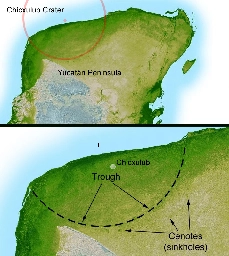The fact that they are devoting two hours to tell the first part of the story gives me a lot of confidence that they are taking the time to tell the story in a deliberate way. I have written elsewhere that this series really reminds me of Mushishi and everything I liked about that show, so I am super excited that they seem to be giving it the pacing that it needs to help the story hit.
I have read the manga and the early manga definitely gives me Kino's Journey/Mushishi vibes. Those are two of my all-time favorite anime and Frieren is probably the closest I have ever come to having that same feeling in manga form. So, I am super excited about it as well.
The type of pill that was approved is the progestin-only "mini pill" which has a much safer clinical profile than the more common-in-the-US combination pill that has both progestin and estrogen. This type of pill is already available OTC in over 100 other countries. The US is just really behind the curve on just about anything to do with reproductive rights and care.
The price of the pill, which has not been announced, will determine how affordable it will be when it becomes available in early 2024.

cross-posted from: https://mander.xyz/post/1133527
> Paywall-free link: http://archive.today/oPjro
So far this season...
Enjoying:
- Horimiya
- Zom 100
Waiting to see how it plays out:
- Vending machine
- Ryza
- One Room Hero
- Helck
Waiting to binge after the season is over:
- Kenshin
Old show I am currently watching:
- Science Fell in Love
I don't blame you for dropping Ryza. I am going to give it one more episode before dropping since I have heard good things about the source from a friend that is excited about it, but so far I have found it very dull.
Breakthrough here is the ability to image embryos comprised of living cells as opposed to post-mortem embryos.
original doi: https://doi.org/10.1016/j.cell.2023.06.003
This piece resonated with me as I also did not really envision myself working in industry when I started grad school; figuring that I would just stay in academia in one form or another. However, when I started to look outside academia (after seeing lab mates stuck in endless post-doc loops), I was surprised at the breadth of opportunities that were available.
Even though my degree was in physics, I was doing stuff relevant to several different industries. I interviewed for roles in data science, materials science, petrochemicals, food science, and pharma. Ultimately, I ended up in pharma and the very first program I worked on was an immunotherapy to target the type of cancer that caused the death of my grandfather. It wasn't some grand design on my part, just a coincidence that echoes some of what this author experienced.
Babe the goat is trendier than she looks.
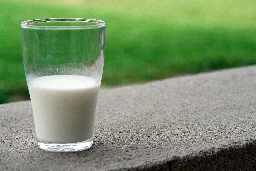
U.S. travelers and healthcare providers looking for another—and potentially safer—dengue vaccine will have to keep waiting. | U.S. travelers and healthcare providers looking for another—and potentially safer—dengue vaccine will have to keep waiting. After a protracted review, Takeda has decided to ...
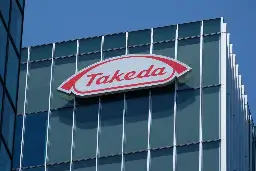
The issue seems to be how the data was collected in the Phase 3 trial:
> Clinical trials of most drugs and vaccines supporting FDA approval are mainly conducted in the U.S. and Europe, where clinical trial protocols are well recognized. The phase 3 TIDES trial used for Qdenga’s application was run in several less well-off, dengue-endemic regions in Latin America and Southeast Asia.
However, it should be noted that Takeda's drug, Qdenga, is already approved by the EMA in the EU and a couple other agencies. It is just the FDA that is holding things up in the US.
Yeah, even comments here haven't seemed to read the article. As somebody that used to install BOINC on all my machines back in the day, the reason I stopped is that many of the projects I ran (SETI being one) aren't active any longer. Also, like the article mentioned, I just don't have a desktop anymore and I am not about to run something like this on a laptop that doesn't have things like user-serviceable or replaceable parts.
I think that @saccharomyces@mander.xyz provided a great response for the specific case of flow in a pipe.
I just want to add that if you look beyond the restrictions of flow in a pipe, there are many other types of behavior that non-Newtonian fluids exhibit. We measure this in the lab on instruments called rheometers. Basically, we put some liquid in the instrument and then deform it and measure the resistance to that deformation. One of the most common ways to apply that deformation is to do so back and forth in an oscillating manner. Depending on the frequency at which you apply this strain, the solid/liquid-like behavior can change. If you have some background in physics or want to get a decent understanding, I found this paper that, on skimming it, seems to be pretty consistent with the way I was taught this stuff in grad school.
One graph I want to point out is Figure 13 which shows what would be a "typical" viscoelastic polymer solution. An easy way to understand this graph is that as we go from left to right, we are applying strain back and forth quicker and quicker, essentially shaking it faster. When the G' value is higher than the G" value, then the material is behaving more like a solid and conversely, when G" > G', then it is behaving more like a liquid. You can see that the material goes through different phases of behavior as the strain frequency changes. Just for you I went and dug up an old graph from my thesis to show a real-life example of this happening too.
My favorite demonstration of this is to put Oobleck (or something similar) onto a speaker and then change the frequency and see what happens.
Please, please let Ooyama's accidental confession mean something. Imo, this series has really pushed the "do they like me" bit to the breaking point. If Akutsu goes back to questioning it, then it's clear this series is never going to see real relationship progress.
ULA's Vulcan rocket is likely at least a year away from becoming operational.
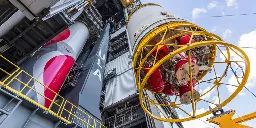
Continued fallout from the explosion of the Centaur upper stage on ULA's test stand as Vulcan's launch continues to slip.
> In a statement, ULA described the work needed on the Centaur V upper stage as “minor reinforcement at the top of the forward dome,” or the uppermost section of the liquid hydrogen tank. The changes will add strength to the tank, which contains super-flammable fuel chilled to minus 423° Fahrenheit (minus 253° Celsius).
The pressure is on as the DOD is eagerly waiting for Vulcan.
> The US Space Force is eager for the Vulcan rocket to enter service. The Pentagon selected ULA and SpaceX in 2020 to launch around 40 of the military’s most critical surveillance, communications, and navigation satellites from 2022 through 2028. ULA won the rights to launch about 60 percent of the missions, primarily using the new Vulcan rocket, with SpaceX taking the remaining 40 percent with its Falcon rocket family.
The maiden flight of Spain's Miura 1 rocket, twice suspended in recent weeks, has now been delayed until September over fears its launch could start a wildfire, its developer said Tuesday.

> "The postponement is motivated by obligatory compliance with the prevention of forest fires... as well as the high temperatures" in southern Spain "to ensure the safety of the area where the launch is carried out".
First time I have seen this cited as a reason for a launch delay.
With their unique appearance, texture, and mouthfeel, fondants have intrigued bakers and physicists for years. They present an appetizing enigma in the world of confectionery, an intriguing combination of sugar, water, and heat that, when manipulated correctly, yields a delectably creamy product.
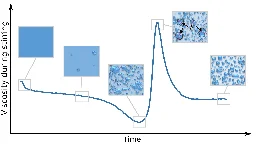
This is about a recent study looking at the rheology of fondant. Essentially, fondant is created from a supersaturated solution of sucrose that is agitated (kneaded). This causes the fondant to experience a sequence of events:
- First, the agitation induces crystal nucleation and growth. In the early stages of crystal formation, the surrounding solution is depleted of sucrose, reducing the bulk viscosity.
- However, as the crystals grow in size, they are large enough to push against one another in hard sphere-like interactions. This causes a sharp increase in viscosity at this critical crystal size.
- As agitation continues, sucrose crystals fracture and the system reaches an equilibrium crystal size distribution, causing the viscosity to decrease from its peak. This is the final state of a smooth, pliable fondant.
There is a doi provided by the article, but as of my posting this, the doi hasn't been activated yet.
Agree that the ending felt a bit weak. I think that picking up the pace in the show a bit more and getting further in the story would have helped things. At the moment, Raeliana is still a character without much agency, and it would be great to see a bit of her future character growth.
So, it has been a while since I read the manhwa (I haven't read the original webnovel), but I am overall pleased with how the adaptation has gone so far. You could definitely tell that there were very limited budgets. There are so many instances of slideshow animations or just still images, but they seemed to invest heavily in making beautiful stills and backgrounds.
My major complaint about the show is that, in general, it has gone very slowly. I expected them to be further along in the story after 12 episodes, but the pacing has been plodding at best. If my memory serves, I think they adapted 3 of the 7 volumes of the manhwa. I understand that a lot of shows tend to go too quickly, but this show just seems to drag out every conversation like it is padding for time (maybe to help stretch the animation budget too).
Overall happy with the show so far and hope that if it gets a second season it gets a bit more resources thrown its way.
The fine is from an unrelated, earlier incident in Alabama. From what I found on jalopnik:
Earlier this year, a worker was killed by being sucked into an airplane engine in Alabama on New Year’s Eve. The employee in that scenario was warned several times that the plane’s engines would be on, however. Still, OSHA hit the small airline Piedmont with a fine of $15,625 in the workers death.
This incident with Delta that happened in Texas is under investigation.
Vertex could be “leading the path to insulin independence," according to analysts, after another batch of data showed that the off-the-shelf diabetes cell therapy stimulated insulin production in a | Vertex could be “leading the path to insulin independence," according to analysts, after another bat...
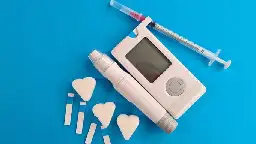
This is a summary of a Phase 1/2 trial of a cell therapy meant to stimulate insulin production in diabetes patients. The top line is that it met its clinical endpoints and several of the patients no longer require external insulin dosing at all and their blood sugar is well managed. Vertex also has a number of follow-up therapies in the pipeline meant to improve upon this therapy.
I personally don't have much experience in cell therapy, but the potential of a treatment like this is clear. We will see what the data looks like as this goes through the clinical trial pipeline and expands the patient population in Phase 3.
Not sure if TIL-type posts are allowed here, but thought that the story of the history of this event is interesting in a "history of science" type of way. If you want a narrative style of telling, you can check out this Smithsonian piece.
Story time! I watched Jurassic Park again recently and there is a bit in the movie where there is a discussion about competing theories for how the dinosaurs met their end. I didn't realize that back in the early 90's the impact theory was just one of a competing number of theories, so I did some reading.
Turns out that while doing readings to explore for gas/oil in the Caribbean, the Mexican state oil company, Pemex, had found evidence for the Chicxulub crater way back in the 1940's, but dismissed it as volcanic activity and moved on since volcanic regions are not great for oil extraction.
Fast forward to the late 70's and geophysicists are making additional measurements for Pemex and correctly ID the ring structure of these readings as a likely impact crater. The company is not really interested but consent to allow them to present their findings.
The cruel irony is that the conference at which the findings were presented occurred the same week that there was a special, separate conference with impact crater experts to discuss the impact theory of the end of the dinosaurs. So, there were no experts in attendance to learn about Chicxulub crater's existence from the Pemex scientists or recognize it's importance.
It took another 9 years, 1990, before the two worlds connected and further action was taken to ID Chicxulub as the impact crater that corresponded to the exact time period scientists were looking for.
Then, finally, it was 2010 before scientific consensus was (generally) reached that Chicxulub is the impact that ended the dinosaurs.
I love Lichtenberg Figures as much as the next nerd, but knowing even a little bit about how they are made should make all the alarm bells in your head go off that it shouldn't be done at home. If you want a safe way to play around with electricity, get a Van de Graaff generator.
That's fair. I couldn't find much info on their website, so I assumed this was another make insulin cheap using "biohacking" deal. I don't have any experience with small molecule synthesis or dry powder manufacturing, so I can't really speak to how feasible this may be. However, having seen first-hand all the ways simple manufacturing steps can go wrong, the risk of consuming a medication that hasn't been through rigorous QA/QC makes me very wary.
Apologies for the long post. I don't mean this as an attack on OP, just trying to illustrate why actually doing this is a bad idea.
I have seen efforts like this in the past, especially centered around efforts to manufacture insulin cheaply. While I get that medicine cost and availability is broken at a fundamental level in the US, the solution is a political one rather than to run a wildcat bioreactor. There is simply no way to safely manufacture biologics using a 3d printed bioreactor. Let's look at the manufacturing process to get an idea of why.
Staring with the bioreactor, you would need some way to sterilize it before use (not just sanitize, there's a difference). There are plastic bioreactors that are used in industry, but they are large, single-use bags that are sterilized using gamma or x-ray radiation. Most industry bioreactors are made of stainless steel to withstand the harsh treatment required to re-sterilize them (steam or hydrogen peroxide).
Moving down the chain from the bioreactor, you need some way to remove your product from the harvested liquid. This is usually done through lysing the cells you have grown and then running this lysate through a series of chromatography columns of varying types (affinity, ionic, etc.) to systematically remove all the junk left over from your cellular media and the cells you have lysed. Even if you could (unsafely) grow your cells and drug in a 3d printed bioreactor, you don't have these kinds of things at home and can't just get them from Amazon.
However, let's say that you could get past the purification step, what's next? You find yourself with a large volume of very dilute medicine suspended in a chromatography buffer. The next step is what is called UF/DF, or ultra-filtration/dia-filtration. This step, paradoxically done DF first, uses filter membranes and large amounts of buffer and some pressure to first swap out the buffer that your medicine is in to the target formulation that you want to inject and then concentrate it down to a manageable volume. If you are working at small scale, then you can probably replace this step with just one filter and a centrifuge. Remember that while you are doing all this, everything that comes into contact with your drug needs to be sterile (even the air).
I think I have made my point, but for actual drugs there are more steps beyond this. Post-UF/DF is what is referred to as drug substance (DS) in the industry. You still need to go through a sterile fill-finish process to get drug product (DP) that is what is actually given to a patient. If you really want, I can go on another long tirade here since this is the step my job focuses on.
I have worked on these manufacturing processes and seen them fail a lot for very hard to catch problems. Without all the in-process controls and testing we do, there would have been serious risks of giving bad DP to patients. If you have read this far, then I hope I've convinced you not to give this kind of thing a try.
The real problem this is trying to solve is a political one. We should be advocating for better access to medications and reforming how costs are dealt with. It doesn't matter what your political persuasion is, I think everyone agrees healthcare in the US is broken and it's time something is done about it.
This might not quite be what you are looking for, but my favorite piece of writing that is science-adjacent is Surely You're Joking, Mr. Feynman!.
As for current stuff, I work in pharma development, so there aren't great sources out there. A lot of the studies that are published in places like phys.org or medicalxpress.com (or other wire-like services) pertain to very early stage drug discovery things, not formulation and device development. I tend to keep a tab open to fiercepharma and fiercebiotech for industry news. Other than that, there are a handful of academics that tend to share papers on linkedin or twitter that usually get passed around in the office if people find it interesting.
I am glad I don't work in the clinical trial design space. It is already complicated enough to design a good clinical trial and this adds a whole other layer of complexity to it.
A sad component to this is that women are already underrepresented in clinical trials and this is likely to exacerbate the problem.
The bans and restrictions complicate clinical trials and leave risky paper trails.

doi for the original Science piece: https://doi.org/10.1126/science.adh3104
It hopefully should. One of the main reasons biologics are so expensive isn't just corporate greed (though it is that too), but because the manufacturing process is very intense. Running bioreactors at commercial scale to make your product, using a train of chromatography steps to purify it, and then filtering it to be concentrated and sterile before fill/finish in a pre-filled syringe or vial followed sometimes by lyophilization is an insanely complicated process that is very costly. mRNA processes simplify this a lot in that the mRNA don't need to be manufactured using bioreactors that are filled with dirty cellular flotsam and jetsam that need removed. So, the production and purification parts are much much simpler. It still isn't likely to be cheap, as GMP manufacturing is still complex and the fill/finish part of the operations are largely unchanged, but hopefully cheaper.
Wild bison that once numbered in the tens of millions in North America before being hunted almost to extinction are once again thriving in a pocket of western Canada.

cross-posted from: https://beehaw.org/post/720520
> This summarizes a report from Parks Canada about the reintroduction of bison to the Banff National Park. > > > A Parks Canada report published this week concluded that the reintroduction was a success, and it suggested that due to their robust growth rate, this bison subpopulation—one of only five that occupy a mere 0.5 percent of their original range in North America—may no longer be considered endangered within a decade. > > Original report: https://parks.canada.ca/pn-np/ab/banff/info/gestion-management/bison/rapport-mai-reintroduction-may-report
Wild bison that once numbered in the tens of millions in North America before being hunted almost to extinction are once again thriving in a pocket of western Canada.

This summarizes a report from Parks Canada about the reintroduction of bison to the Banff National Park.
> A Parks Canada report published this week concluded that the reintroduction was a success, and it suggested that due to their robust growth rate, this bison subpopulation—one of only five that occupy a mere 0.5 percent of their original range in North America—may no longer be considered endangered within a decade.
Original report: https://parks.canada.ca/pn-np/ab/banff/info/gestion-management/bison/rapport-mai-reintroduction-may-report
This is neither here nor there, but I just want to compliment whoever did their favicon. I didn't realize favicons could be animated like that, I am surprised I don't see it more often.
I commented this in a different thread on this news story, but this approval in an interesting one in that it has been approved using the accelerated approval pathway because there was an unmet clinical need. However, if you look at the clinical landscape, there are other options for treatment (also from Sarepta I should mention). Additionally, the interim clinical data showed protein expression which is what the FDA cited in their approval, however that interim data did not show significant positive clinical benefit. From PBS:
FDA scientists detailed a long list of concerns with the company’s research, particularly a mid-stage study that the company submitted for FDA review. Overall, it failed to show that boys who received the therapy performed significantly better on measures like standing, walking and climbing than those who got a dummy treatment
Accelerated approval pathways make sense in many cases they are used, however, the agency should beware allowing accelerated approval being abused by drugmakers to get a drug to market quickly and then slow-walk the post-approval obligations (which are usually very expensive phase 3 studies). Being too liberal with accelerated approvals incentivizes questionably efficacious therapies that are simply used as a profit tool before the data shows the full extent of their clinical impact.
I recently posted an opinion piece that talks about this in some more detail and provided some additional thoughts in that thread. I am not a specialist when it comes to regulatory practices or strategy, but simply a scientist in the field that is concerned about potential abuse of a regulatory mechanism that has the potential to cause harm to patients.
Plenty of news stories have focused on the danger posed by Kessler syndrome. In this condition, space is made inaccessible by a cloud of debris surrounding our planet that would destroy any further attempts to get into orbit. Therefore, plenty of companies have sprung up that problem to take care of...
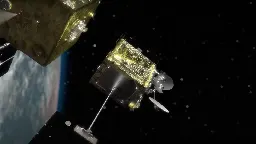
This mission, ELSA-M, is a follow-up on the proof of concept ELSA-D mission that was launched in 2021 and successfully rendezvoused with a client's satellite.
A challenge to this company going forward I see is that their interceptor requires a proprietary plate of their design to already have been affixed to the target satellite. I just don't see how this gets wide adoption enough to help meet their lofty preventing Kessler syndrome rhetoric.
The war is far from over but Ukraine’s government is already considering how to build back — and use the opportunity to move on from a Soviet-era system.
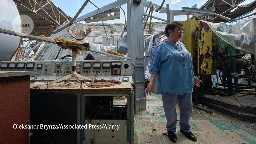
cross-posted from: https://beehaw.org/post/698765
> This article summarizes some of the challenges as well as opportunities that Ukraine is faced with in a post-Russian invasion world. > > In addition to the brain-drain effect of talented scientists leaving the country, Ukraine has some structural issues as well: > > > The current research system is composed largely of the Soviet-style national science academy — for which the research agenda was historically set by state officials — and a university sector in which research is funded by the science ministry. > > > Entirely lacking is a modern, performance-based grant-giving system...the centrepiece of a new system would include funding streams for basic research, competitive grants and defence-related projects. Ukraine’s research strengths include agricultural technology, energy and planetary science > > doi: https://doi.org/10.1038/d41586-023-02031-8
The war is far from over but Ukraine’s government is already considering how to build back — and use the opportunity to move on from a Soviet-era system.
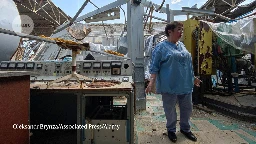
This article summarizes some of the challenges as well as opportunities that Ukraine is faced with in a post-Russian invasion world.
In addition to the brain-drain effect of talented scientists leaving the country, Ukraine has some structural issues as well:
> The current research system is composed largely of the Soviet-style national science academy — for which the research agenda was historically set by state officials — and a university sector in which research is funded by the science ministry.
> Entirely lacking is a modern, performance-based grant-giving system...the centrepiece of a new system would include funding streams for basic research, competitive grants and defence-related projects. Ukraine’s research strengths include agricultural technology, energy and planetary science
doi: https://doi.org/10.1038/d41586-023-02031-8
cross-posted from: https://beehaw.org/post/698268
> This paper details a new hydrogel patch coated in microneedles used to delivery medication to tissues. The design of the patch was inspired by the Blue-ringed octopus and the method by which it administers toxins. > > Unrelated to this paper (which is really cool) I feel like scientific figures have really fallen prey to a trend to cram too much information into each figure, making them impossible to comprehend. This paper as an example features two figures that go all the way from A through L. If you have to use almost half the alphabet to label your figures, maybe something can go to supplemental information. > > doi: https://doi.org/10.1126/sciadv.adh2213
cross-posted from: https://beehaw.org/post/698268
> This paper details a new hydrogel patch coated in microneedles used to delivery medication to tissues. The design of the patch was inspired by the Blue-ringed octopus and the method by which it administers toxins. > > Unrelated to this paper (which is really cool) I feel like scientific figures have really fallen prey to a trend to cram too much information into each figure, making them impossible to comprehend. This paper as an example features two figures that go all the way from A through L. If you have to use almost half the alphabet to label your figures, maybe something can go to supplemental information. > > doi: https://doi.org/10.1126/sciadv.adh2213
Evidence is mounting that astronauts are more susceptible to infections while in space. For example, astronauts on board the International Space Station (ISS) commonly suffer from skin rashes, as well as respiratory and non-respiratory diseases. Astronauts are also known to shed more live virus part...

cross-posted from: https://beehaw.org/post/697648
> Exposure to microgravity causes changes to the human immune system: > > > "Here we show that the expression of many genes related to immune functions rapidly decreases when astronauts reach space, while the opposite happens when they return to Earth after six months aboard the ISS," said Dr. Odette Laneuville, an associate professor at the Department of Biology of the University of Ottawa, leading author of a new study in Frontiers in Immunology. > > doi: https://dx.doi.org/10.3389/fimmu.2023.1171103
Evidence is mounting that astronauts are more susceptible to infections while in space. For example, astronauts on board the International Space Station (ISS) commonly suffer from skin rashes, as well as respiratory and non-respiratory diseases. Astronauts are also known to shed more live virus part...

Exposure to microgravity causes changes to the human immune system:
> "Here we show that the expression of many genes related to immune functions rapidly decreases when astronauts reach space, while the opposite happens when they return to Earth after six months aboard the ISS," said Dr. Odette Laneuville, an associate professor at the Department of Biology of the University of Ottawa, leading author of a new study in Frontiers in Immunology.
doi: https://dx.doi.org/10.3389/fimmu.2023.1171103
